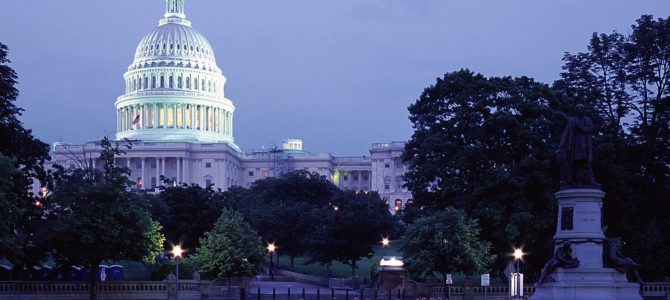
The House Energy and Commerce committee held a hearing Wednesday to consider legislation aimed at promoting diversity in the media industry, particularly targeting ownership of broadcast stations.
The hearing, titled “Lifting Voices: Legislation to Promote Media Marketplace Diversity” centered on three bills and a resolution that seeks to reaffirm the House’s “commitment to media diversity and pledging to work with media entities and diverse stakeholders to develop common ground solutions to eliminate barriers to media diversity.”
At the start of the hearing, lawmakers and witnesses were sure to point out the “embarrassingly” low level of minority-owned broadcast television stations across the country, as one witness described, in proportion to their representation in the general population. According to committee research, only around 10 percent of commercial television and commercial FM radio stations were owned by women and minorities in 2015.
The three laws discussed in the committee include bills aimed at diverting resources in the federal government to promote minority ownership of media broadcast stations. Lawmakers asked a panel of four witnesses questions about the “Expanding Broadcast Ownership Opportunities Act of 2019,” the “Enhancing Broadcaster DIVERSITY Data Act,” and the “MEDIA Diversity Act of 2020.” The set of laws would provide tax credits to companies being sold to minorities, devote resources to study minority representation in the media, and require the Federal Communications Commission to push financial investment in minority-owned stations.
“This is a question of whether people like me get to serve the public,” Santa Clara Law School Professor Catherine Sandoval told lawmakers. In other words, she believes nobody would hire her based on her quality of work, and thus she and other nonwhite people need affirmative action programs outside education, housing, and government contracting.
During the hearing, one California congressman asked Sandoval how government pushing affirmative action in media would help constituents who have suffered from natural disasters like widespread fires access critical information.
“If we don’t do more to increase minority ownership of broadcasting stations, what would it mean during times of crisis for constituents in districts like mine?” Democratic Rep. Jerry McNerney asked, implicitly assuming that white people and brown people are unable to have compassion for each other and that white reporters cannot give accurate information to nonwhite people about natural disasters.
Sandoval went on to tout the importance of broadcast media in times of distress when information needs to be distributed to the public when other services such as the internet go down. The California professor offered the Kinkade fires from last year as a case study of broadcast’s importance where the media was able to convey information that the internet could not.
“Broadcasting really showed itself truly to be a lifeline, and broadcasting that addresses the needs of diverse communities is particularly important, especially during those times of crisis,” Sandoval said. Sandoval was unclear however, on exactly how a person of color or a woman on air would be better suited to deliver timely or more accurate information during a crisis than a white person.
McNerney followed up, inquiring how increasing the sex and racial diversity of the media marketplace would help those without access to internet at all such as older people and those living in rural areas.
“If we don’t do more to increase minority ownership of broadcasting stations, what would it mean for individuals living on that side of the divide?” McNerney asked.
Sandoval stressed that it’s important to work “simultaneously” to close the digital divide and further argued that failure to change the media landscape to be more diverse would likely lead to people dying.
This time, Sandoval used the fire in Paradise, California as an example of where broadcast is important during disaster. When the fire broke out and began to spread across the city, the county did not activate its broadcast alerts. “This is part of what contributed to 85 people dying in that fire… so I think addressing both of these things is really critical to the safety as well as to the economy of our nation.”
While the failure to enact broadcast alerts might have been a contributable cause to the unfortunate loss of life, Sandoval was once again unclear as to how picking media personalities based on race and sex could have saved the fire victims.
At another point in the hearing, Democratic Rep. Marc Veasey of Texas said it was only fitting that the committee’s hearing took place this week after the recent release of the Oscar nominations and slammed the academy awards for its nominations being too white.
“I think it’s really interesting that we’re having this hearing right now because I think you know as the Oscar nominations were just released and there’s been lots of talk about some of the nominees and the lack of diversity with some of the nominees,” Veasey said. “So maybe we can find the solution to hashtag #OscarsSoWhite.”
Clint Odom of the National Urban League concurred.
“I think your allusion to the ‘Oscars So White’ problem put your finger on is a potential solution,” Odom said to increasing minorities in the media.
Odom argued that while creators and distributors had a great deal of responsibility on their own to promote diversity in media, “there is a critical role for government.” Odom urged lawmakers to act quickly in increasing government-encouraced selection of people based on race and sex in anticipation of legal challenges that could take years.








